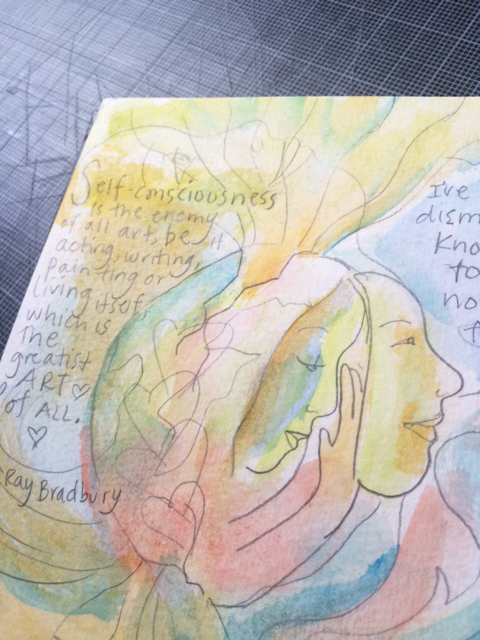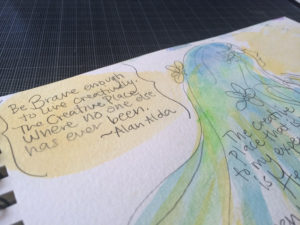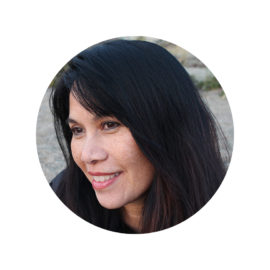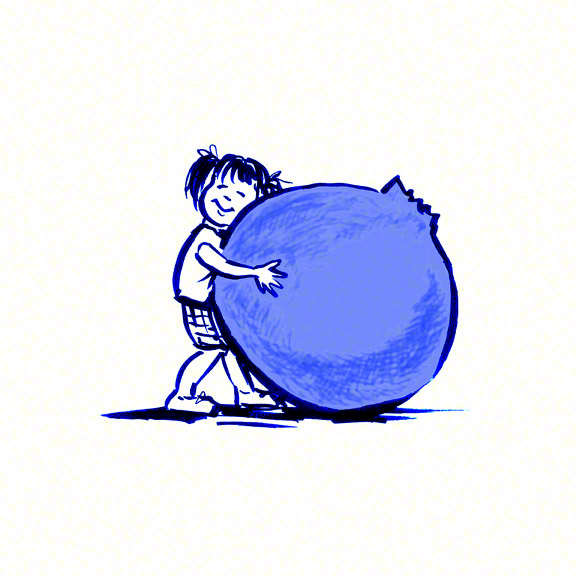I’m crossing the finish line on this seventh and final day of my daily-post-for-a-week challenge. I can’t think of a better way to wrap it up than with a post about “process” and recognizing its place in my studio–and even in my life. First of all, what do I mean by process? For me, process is the way in which I create–kind of like a pass code for opening my creative chambers. It can fire off a myriad of thoughts and ideas and bring about those Aha! moments. I know I’m not alone in recognizing this phenomena. Scientific research shows that “making things” is an innate part of being human, as explained in this Psychology Today article. Process also means getting one’s hands “dirty” and being okay with the messiness in the muddled middle stage of an artistic or creative project.
Process often occurs in the physical space that we occupy–the analog world. We each have a process in how we think, feel and visualize as we use various art tools and materials. What I’ve observed in the school setting, both as a child and as a teaching artist is that the arts are integral to learning about process–akin to the basic building blocks of student learning and personal growth. This has long been recognized in Howard Gardiner’s work with multiple intelligences in education. Today, in the realm of early education, understanding and appreciation for art process is gaining traction.
A way to open ourselves up and explore the notion of process. In a world in which we’re swamped with work and personal commitments and people can reach us in seconds at the touch of a button, it can be hard to take physical breathers, let alone mental breaks. Enter the “sketchbook journal.” This humble object can serve as a playground for art process. It is a book of any type–spiral bound, hardbound, or even scrap papers stapled together–to be used for the sole purpose of journaling. It differs than a sketchbook in that it isn’t utilitarian or filled with reference sketches and work-in-progress notes.The focus of a sketchbook journal is on one’s inner journey. This can be a freeing experience as you open up to process and allow the materials to guide and inform you as you create.
The beauty is that anything can turn up on the page–serendipitous imagery and words pop out, deepening the meaning of the moment. But there’s also a caveat–ANYTHING can turn up on the page. And that can be scary. What if we don’t like how it looks? What if something uncomfortable bubbles up in our writing? These things can happen.
The thing about sketchbook journaling is that it helps to declare it a Judgment Free Zone–No judging the process, no judging the result of yours (or other people’s) sketchbook journals. (BTW, having a judgment-free attitude takes practice. Here are some ideas on how to start.)
Doing a sketchbook journal is a solo endeavor but it doesn’t have to be done completely alone. Online, artists and others from around the world are cheering and supporting each other’s creative efforts. This month, I’m participating in the FIRE:30-Day Journal Project which is a free, global community challenge started by artist-author-guidess, Lisa Sonora. I jumped into this challenge knowing full well that I would be signing up for 30 days of uncertainty and discovery. Lisa provides participants with daily prompts, poetry and other inspirational writings. People can share their pages in a “safe” environment, in a private group on Facebook.
In previous sketchbook journals, I’ve used collage (magazine cut-outs and random ephemera) along with assorted tools for drawing and painting. However, in this go-round, I wanted to simplify. I’ve chosen pencil with light watercolor washes for my journal pages. I don’t expect anything good or great in the way of a product. Rather, I welcome whatever comes up knowing that I’m working deep and trusting in the moment.
The pages are expressly for me and my Muse to witness and enjoy; and in the process, I’m discovering my process for making things and simply being me. Therein, lies the power of process.







